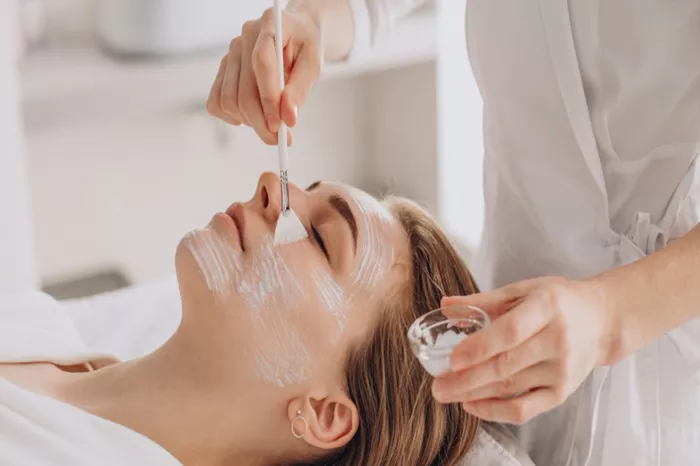Chemical peels have long been celebrated as effective treatments for a variety of skin concerns, from acne scars to uneven pigmentation. Among these concerns, freckles stand out as a common target for individuals seeking clearer, more uniform skin tone. However, the effectiveness of chemical peels in treating freckles raises questions about their mechanism of action, safety considerations, and expected outcomes.
Understanding Freckles: What They Are and Why They Form
Before delving into the role of chemical peels, it is crucial to grasp the nature of freckles. Freckles, scientifically known as ephelides, are small, flat spots on the skin that contain increased amounts of melanin. Melanin is the pigment responsible for skin color and is produced by melanocytes in response to UV radiation exposure. Freckles typically appear in fair-skinned individuals and can darken with sun exposure.
The Science Behind Chemical Peels
Chemical peels are dermatological treatments that involve the application of a chemical solution to the skin, which causes controlled exfoliation and peeling. These peels are categorized by their depth of penetration into the skin:
Superficial Peels: Penetrate only the outermost layer of the skin (epidermis).
Medium Peels: Reach the middle layer of the skin (dermis).
Deep Peels: Penetrate the deeper layers of the dermis.
The choice of peel depth depends on the specific skin concern being addressed, including freckles.
Can Chemical Peels Remove Freckles?
The effectiveness of chemical peels in removing freckles depends largely on the type of freckles and the depth of the peel used. Superficial peels, such as those containing alpha hydroxy acids (AHAs) like glycolic acid or beta hydroxy acids (BHAs) like salicylic acid, are generally ineffective for deeply pigmented freckles. These peels work primarily on the outer layer of the skin and may lighten freckles temporarily, but they are unlikely to provide long-lasting results.
For more deeply pigmented freckles or freckles that extend into the dermis, medium to deep chemical peels may be more effective. Trichloroacetic acid (TCA) peels, for example, penetrate into the dermis and can target deeper pigmentation. Phenol peels, the deepest type of chemical peel, are reserved for more severe skin issues and can significantly lighten pigmented areas.
Safety Considerations and Potential Risks
While chemical peels are generally safe when performed by trained professionals, there are inherent risks associated with these procedures. Superficial peels typically have minimal side effects such as redness and mild irritation, which usually resolve within a few days. However, medium and deep peels carry higher risks of complications such as hyperpigmentation, hypopigmentation, scarring, and infection. It is essential for individuals considering chemical peels to undergo a thorough consultation with a dermatologist or trained skincare professional to assess their suitability for the treatment and to discuss potential risks.
See also: Is Laser Freckle Removal Painful?
Preparing for a Chemical Peel
Preparation for a chemical peel involves several steps to optimize results and minimize risks:
Consultation: Discuss your medical history, skin concerns, and expectations with a qualified skincare professional.
Skin Preparation: Your skincare professional may recommend pre-treatment with topical agents such as retinoids or hydroquinone to enhance peel outcomes.
Post-treatment Care: Follow specific instructions for post-peel care, including skincare routines and sun protection measures to protect the newly treated skin.
Managing Expectations: What Results Can You Expect?
Managing expectations is crucial when considering chemical peels for freckles. While superficial peels may provide subtle improvements in skin tone and texture, deeper peels are more likely to achieve significant lightening of freckles. However, complete removal of freckles is rare, and multiple sessions may be necessary to achieve desired results.
Alternatives to Chemical Peels for Freckles
In addition to chemical peels, several alternative treatments may be considered for addressing freckles:
Topical Treatments: Prescription-strength creams containing ingredients such as hydroquinone, retinoids, or corticosteroids can lighten freckles over time.
Laser Treatments: Laser therapies, such as intense pulsed light (IPL) or fractional laser resurfacing, can target pigmented areas more precisely than chemical peels.
Cryotherapy: This involves freezing the freckles with liquid nitrogen to destroy excess melanin-producing cells.
Each of these treatments has its own benefits and considerations, which should be discussed with a dermatologist or skincare professional to determine the most suitable approach based on individual skin type and freckle severity.
Conclusion
In conclusion, while chemical peels offer a range of benefits for skin rejuvenation and pigment correction, their effectiveness in removing freckles depends on various factors, including freckle depth, peel type, and individual skin response. Superficial peels may provide modest improvements, while medium to deep peels can achieve more significant lightening of freckles, albeit with higher risks. Patients considering chemical peels should prioritize consultation with a qualified professional to assess candidacy, discuss realistic expectations, and explore alternative treatments if necessary.
Ultimately, the decision to pursue chemical peels for freckles should be made in consultation with a dermatologist or skincare expert who can provide personalized recommendations based on your unique skin concerns and treatment goals. By understanding the science behind chemical peels and their role in managing freckles, individuals can make informed decisions to achieve clearer, more even-toned skin safely and effectively.
Related topics:
Top 5 Reasons Why I Have So Many Freckles
Best 5 Vitamin Is Good For Freckle Removal


